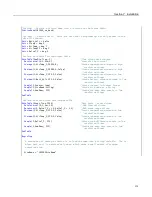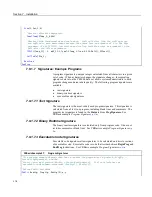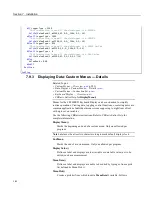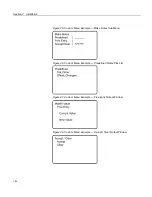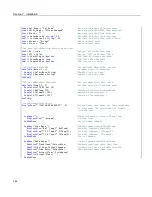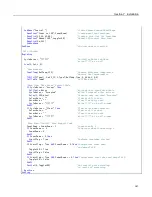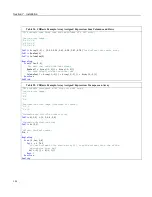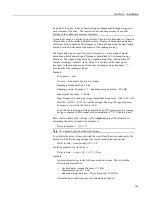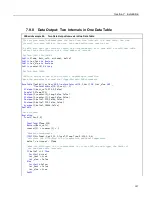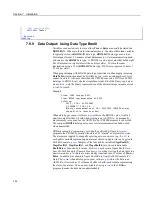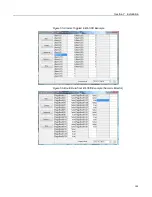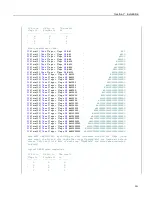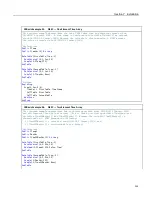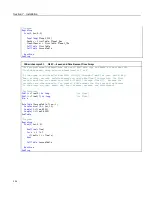
Section 7. Installation
•
Initialize
•
Transpose
•
Copy
•
Mathematical
•
Logical
Examples include:
•
Process a variable array without use of
For
/
Next
•
Create boolean arrays based on comparisons with another array or a scalar
variable
•
Copy a dimension to a new location
•
Perform logical operations for each element in a dimension using scalar or
similarly located elements in different arrays and dimensions
Note
Array-assigned expression notation is an alternative to
For
/
Next
instructions, typically for use by more advanced programmers. It will probably
not reduce processing time significantly over the use of
For
/
Next
. To reduce
processing time, consider using the
Move()
instruction, which requires more
intensive programming.
Syntax rules:
•
Definitions:
o
Least-significant dimension — the last or right-most figure in an array
index. For example, in the array
array(a,b)
,
b
is the least-significant
dimension index. In the array
array(a,b,c)
,
c
is least significant.
o
Negate — place a negative or minus sign (-) before the array index. For
example, when negating the least-significant dimension in
array(a,b,c)
,
the notion is
array(a,b,-c)
•
An empty set of parentheses designates an array-assigned expression. For
example, reference
array()
or
array(a,b,c)()
.
•
Only one dimension of the array is operated on at a time.
•
To select the dimension to be operated on, negate the dimension of index of
interest.
•
Operations will not cross dimensions. An operation begins at the specified
starting point and continues to one of the following:
o
End of the dimension
o
Where the dimension is specified by a negative
o
Where the dimension is the least significant (default)
•
If indices are not specified, or none have been preceded with a minus sign,
the least significant dimension of the array is assumed.
•
The offset into the dimension being accessed is given by
(a,b,c)
.
•
If the array is referenced as
array()
, the starting point is
array(1,1,1)
and the
least significant dimension is accessed. For example, if the array is declared
as
test(a,b,c)
, and subsequently referenced as
test()
, then the starting point is
test(1,1,1)
and dimension
c
is accessed.
189
Summary of Contents for CR1000
Page 2: ......
Page 4: ......
Page 6: ......
Page 32: ......
Page 36: ......
Page 38: ......
Page 40: ......
Page 60: ...Section 4 System Quickstart Figure 16 PC200W View Line Graph 60 ...
Page 96: ......
Page 98: ...98 ...
Page 302: ......
Page 453: ...Section 8 Operation Figure 115 Using the Keyboard Display 453 ...
Page 456: ...Section 8 Operation Figure 118 Real Time Custom 456 ...
Page 457: ...Section 8 Operation 8 8 1 3 Final Memory Tables Figure 119 Final Memory Tables 457 ...
Page 458: ...Section 8 Operation 8 8 2 Run Stop Program Figure 120 Run Stop Program 458 ...
Page 460: ...Section 8 Operation Figure 122 File Edit 460 ...
Page 461: ...Section 8 Operation 8 8 4 PCCard Memory Card Display Figure 123 PCCard CF Card Display 461 ...
Page 478: ......
Page 506: ......
Page 536: ......
Page 636: ......
Page 642: ......
Page 644: ......
Page 676: ......
Page 677: ......

